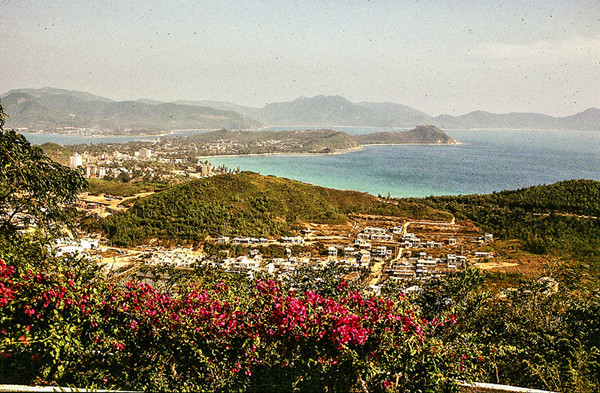
Dadonghai from Luhuitou Hill 1993. [Photo by Bruce Connolly/chinadaily.com.cn]
To appreciate the area's geography I followed a path up Luhuitou ('Deer Turning Backwards') Hill where a café sat amidst colourful surroundings of purple, pink and red flowering bushes. Looking out over a scene of many bays enclosed by green, verdant hills with shimmering blue seas I was reminded of the Mediterranean. It really did have that feel and below amongst the coconut groves of Luhuitou I could see areas being prepared for development. Some of China's top resort hotels are today located there. But in 1993 I descended to small villages reached by gravel roads where local shops sold coconut juice and cold drinks for a couple of yuan. This was a location I returned to many times, particularly in the late afternoon to enjoy the sun setting over offshore, hilly islands, just as fishing boats headed back to the harbor.
Sanya was also a port on the Maritime Silk Road and like Haikou, its older areas were a joy to explore. Little wooden vessels serving as cross-harbour ferries allowed for close-up views of boats and local life tied up with maritime commerce, trade and of course, fishing. But it was also the major town for much of southern Hainan. The central market was a photographer's dream with colourful displays of exotic fruits, vegetables and circular bamboo stockades teaming with chickens and geese. For me it was also a first experience to come close to some of China's ethnic groups – while the Li and Miao inhabited nearby forested, hilly areas, close to Sanya there were Moslem communities with women wearing bright coloured head scarves. Legend suggests they were descendants of Asian seafarers from a trading vessel that shipwrecked several hundred years previously.
To be continued...